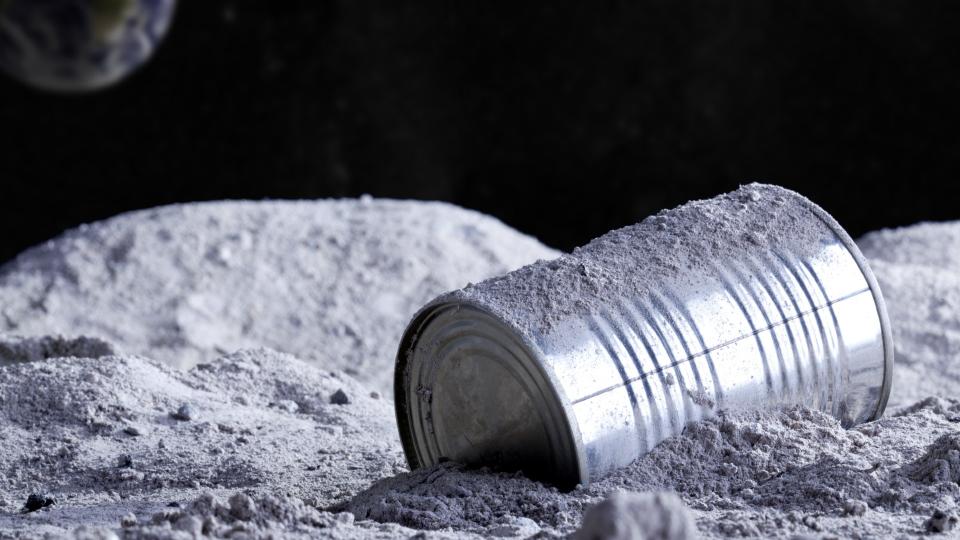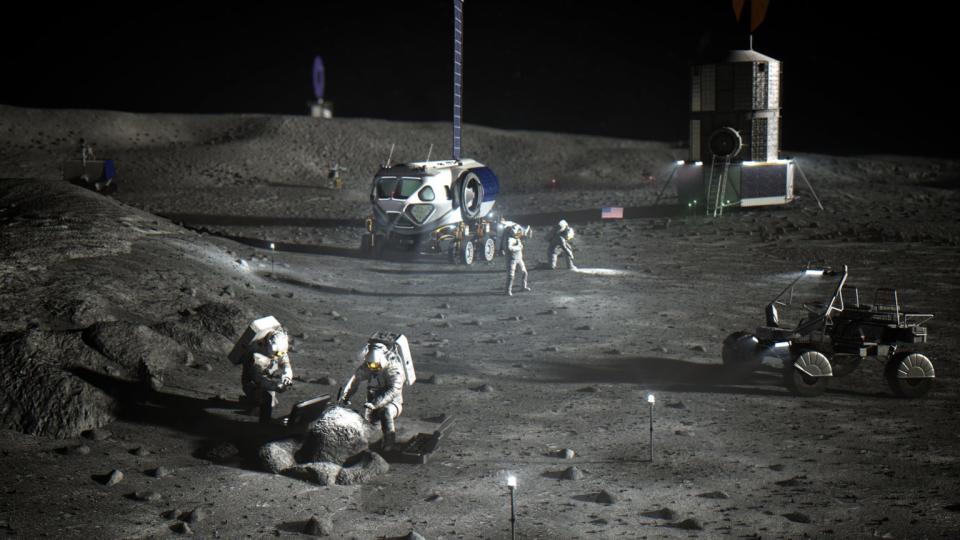NASA wants fresh ideas for recycling garbage on the moon
When you buy through links on our articles, Future and its syndication partners may earn a commission.

With crewed Artemis launches on the horizon, NASA is searching for sustainable solutions for waste management during long-term missions on the moon.
An initiative called LunaRecycle, under the space agency's Centennial Challenges Program, aims to incentivize the design and development of recycling solutions for use on the surface of the moon and/or inside pressurized lunar habitats. The program aims to reduce solid waste streams during long duration lunar missions under the Artemis Program, as well as to improve the sustainability of future space exploration.
"As NASA prepares for future human space missions, there will be a need to consider how various waste streams, including solid waste, can be minimized as well as how waste can be stored, processed, and recycled in a space environment so that little or no waste will need to be returned to Earth," according to a contract opportunity for Phase 1 of the LunaRecycle Challenge.
With so many missions heading to the moon, both private and governmental, some scientists argue that humanity has entered a new "lunar anthropocene" marked by an age in which humans are beginning to alter the moon forever. After all, previous crewed moon missions left landers, flags, scientific experiments, golf balls, and even human excrement on the lunar surface.
NASA wants to reduce the impact astronauts have on the moon through this new program. Still, establishing a long-term presence on the lunar surface will require transporting a lot of cargo from Earth to the moon, prompting the need for reuse and recycling processes to minimize the disturbance to the lunar environment. For context, everyday items such as paper, cardboard, plastics, metals, textiles and glass, make up over 50 percent of municipal solid waste in the U.S., and only 40 percent of that waste is recycled, according to the challenge statement.
NASA aims to tackle this recycling deficit head-on with this new LunaRecycle initiative. "This challenge will focus on recycling approaches for materials very similar to materials that are difficult to recycle," the draft rules state.
"The challenge has the potential to highlight entirely novel approaches to recycling; processes that improve energy efficiency and water efficiency; processes that reduce un-usable outputs and toxic emissions; and smaller-scale solutions that could be deployed in communities in a more distributed way than recycling facilities today."

The LunaRecycle Challenge will have two competition tracks, including a "digital twin" track that requires participants to design a virtual model of a system that can recycle one or more solid waste streams on the lunar surface and manufacture one or more end products. Additionally, the prototype build track focuses on designing and developing actual hardware capable of recycling one or more types of solid waste on the lunar surface.
This will help fulfil a need that NASA envisions for "a variety of end products that may wholly or partially utilize materials created from the recycling process," the draft rules state.
RELATED STORIES:
— We need more rules for space junk and moon bases, NASA and US officials say
— Getting it right on the moon: Let's not trash Tranquility (op-ed)
— Astronauts could mix moon dust with old satellites to make fuel
The competition will consist of two phases, starting with each team addressing the technical details of their proposed solutions for review by a panel of judges. Phase 2 is dependent on the submission of viable approaches to addressing the challenge in Phase 1, according to the drafted rules.
The total funding for the LunaRecycle Challenge is $3 million, with $1 million allotted for Phase 1 and $2 million is reserved for Phase 2. Phase 1 registration begins in September, with submissions due by March 31, 2025. Judging will begin in May, following which winners will be announced, along with Phase 2 rules.

